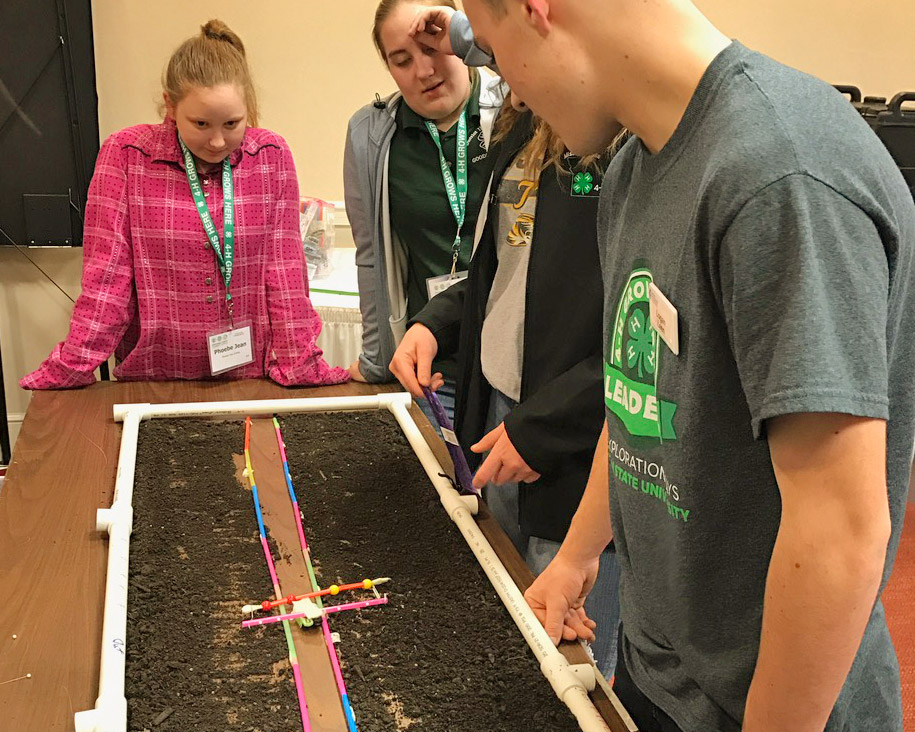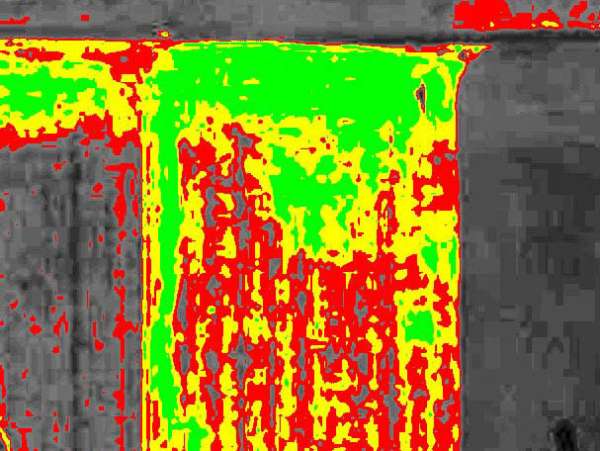Healthy soils
# Healthy soils
Students use a slake test to investigate the soil structure and a chemical test to determine the amount of organic material in a soil sample. Students engineer a no-till planter.
Files
Teacher background
Soil health (quality) is the ability of a soil to perform various functions such as supporting plant growth and biological diversity, regulating and altering water flow, and providing an environmental buffer against hazardous compounds. An acre of healthy soil can contain up to 900 pounds of earthworms, 2,400 pounds of fungi (mushrooms and similar organisms), 1,500 pounds of bacteria, and 890 pounds of arthropods (insects) and algae.
In the past, farmers mostly plowed their fields to prepare the ground and plant seeds. However, tilling uses fossil fuels. It also breaks apart glomalin (soil protein from fungus), a kind of organic “glue” that holds healthy soil together. Tilling disrupts the soil, which causes carbon to release into the air.
Today, more and more farmers use conservation tillage and no-till methods on their acres to prepare a seed bed, kill weeds, incorporate nutrients, and manage crop residues. No-till systems disrupt the soil very little, except to plant crops. No-till farming allows the creation of glomalin, creating spaces for carbon and water to collect, thereby adding to soil health and reducing water runoff. Both soil health and carbon sequestration (the storage of carbon dioxide from the air to the ground) improve with no-till practices because they improve soil structure and biological activity. About half of the land used to grow the major crops in the U.S.
(like corn, wheat, soybeans, and cotton) employs no-till or conservation tillage methods. Watch this video to see demonstrations of the lessons.
Next gen science standards
Science and engineering practices
- Asking questions (for science) and defining problems (for engineering)
- Developing and using models
- Constructing explanations (for science) and designing solutions (for engineering)
Crosscutting concepts
- Cause and effect
- Systems and system models
Disciplinary core ideas/content
- ESS3A Natural resources
- ESS3C Human impacts on Earth systems
- LS1A Structure and Function
- LS2A Interdependent relationships in ecosystems
- LS2C Ecosystem dynamics, functioning and resilience
- ETS1 Engineering Design
- ETS1A Defining and Delimiting an Engineering problem
- ETS1B Developing possible solutions
- ETS1C Optimizing the design solution
- ETS2 Links among Engineering, technology, science and society
- ETS2A Interdependence of science, engineering and technology
- ETS2B Influence of engineering, technology and science on society and the natural world





Share this